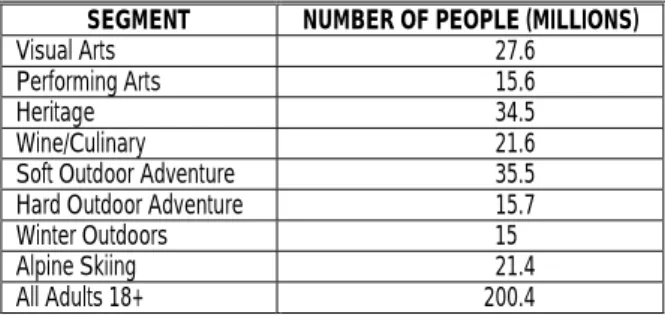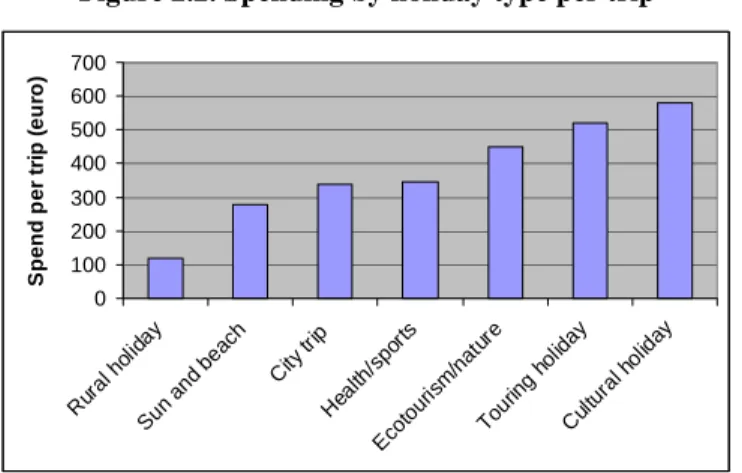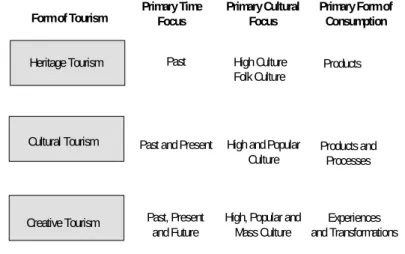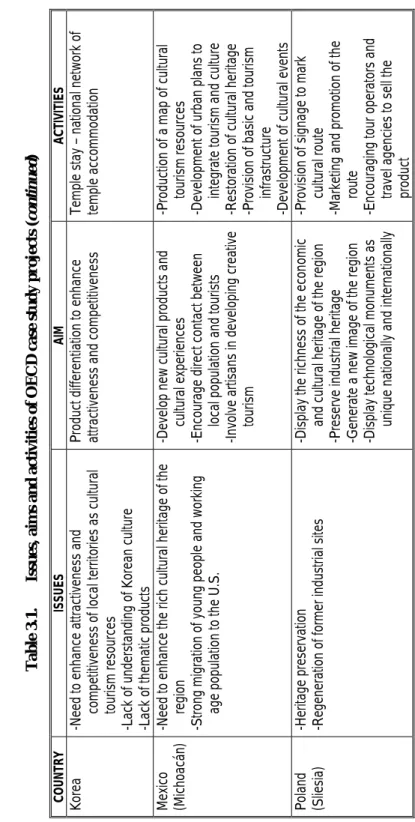This book provides an analysis of the relationship between tourism, culture and the attractiveness and competitiveness of destinations. The case studies illustrate various aspects of the relationship between tourism, culture and regional attractiveness and the policy interventions that can be undertaken to improve this relationship.
Increasing the Attractiveness of Destinations through Cultural
Introduction
The purpose of this book is to analyze the relationship between tourism, culture and the attractiveness and competitiveness of destinations. The case studies aim to illustrate various aspects of the relationship between tourism, culture and regional attractiveness and the policy measures that can be taken to strengthen this relationship.
Roles and Impact of Culture and Tourism on Attractiveness
In the case of the United Kingdom, the link between tourism and culture was originally made on the basis of the importance of 'national heritage' to tourism and vice versa. Wikhal (2002:1) argues: “The ability to attract people by offering a good quality of life is crucial for regional competitiveness.

Policies and Programmes for Culture and Tourism
Tourism and leisure are extremely important to the region's economy, accounting for 15% of GDP. The main objectives of the culture and tourism programs reviewed here are related to the improvement of the economic, cultural and social position of the target regions. This is the case at Port Arthur Historic Site in Australia, for example (Box 3.6).
The planning process involved a thorough analysis of the current situation of Austrian cultural tourism as well as opportunities and threats in the future. Reflect the traditional culture of the region and give the visitors the opportunity to use it. One of the most important ways in which public authorities can help with the development of cultural and tourism products is through marketing activities.
Interestingly, one of the cities that participated in the original project, namely Delft, subsequently linked their promotion to Rotterdam. In the Alentejo region of Portugal, the European Network of Villages is developing the concepts of "Village Tourism" and "Tourism of Imagination". This program has been one of the factors behind a strong growth in the number of tourists learning the local Catalan language over the past two years.
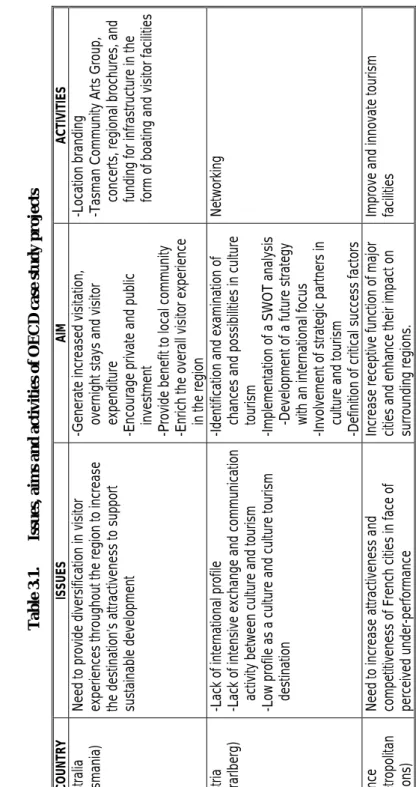
Conclusions, Policy Implications and Long-Term Challenges
One of the problems with adopting such innovative approaches to the relationship between culture and tourism is the relatively traditional approach to culture and tourism taken by most regions. One of the reasons for this is the lack of imagination in policy making in general. The success of the European Capital of Culture has brought imitators around the world and the competition to win the title has intensified.
The use of the Internet to promote regional culture and tourism is becoming indispensable as a promotional tool, but the marketing message must be delivered to tourists with the motivation to consume the region's cultural products. More work needs to be done in identifying the elements of the cultural product and resulting cultural experiences that are likely to be successful in global markets. When it becomes clear that tourists are also part of the cultural audience (even though they have traveled further to attend), then these differences can be bridged.
Convincing residents of the benefits of tourism development is increasingly crucial, as it forms the core of the cultural and creative tourist experience. It is also an important consequence of the increasing competition between regions for an increasingly global cultural audience. It is important that regions find mechanisms to ensure that some of the economic benefits generated by tourism are returned to the cultural institutions that create them.
Case Studies from Five OECD Members
Introduction
The current analysis is largely based on original case study material provided by selected OECD countries. These and other relevant case studies provide examples of best practice of how culture can be used to enhance regional attractiveness. Case studies have been provided by Australia, Austria, France, Greece, Italy, Japan, Korea, Mexico, Poland, Portugal, Romania, Slovakia and Turkey.
The standard case study format allowed comparisons to be made between destinations in different parts of the world, as well as the identification of common themes in the relationship between tourism and culture. Examples taken from the case studies are also used throughout Part I to illustrate key points.
The Port Arthur Historic Site, Australia
However, central to the success of the city's development in 2000 was the implementation of an ongoing program of periodic (five-year) funding. The contribution of the historic site of Port Arthur to the development of Tasmania can be evaluated in terms of use, both direct (recreational, commercial, educational, aesthetic and social) and indirect (dissemination of research and non-use values such as pure existence and vicarious consumption). values). Presentation of '130 Years of Tourism in Port Arthur', an exhibition part of the 2008 Tasmanian Heritage Festival.
The attributes of PAHS are further enhanced in the context of its location - the Tasman Peninsula. The range of habitats found within the small and insular environment of the Tasman Peninsula offers a high natural diversity. This resulted in the dissolution of the organization and its associated Visitor Information Center operations being transferred to PAHMSA.
In 2007, the Port Arthur and Tasman Tourism Association (PATTA) was established with financial support from both PAHSMA and the Tasman Council in line with a key recommendation of the TTDS. Level of awareness and familiarity of Port Arthur in the context of the overall experience of Tasmanian visitors. With the strengthening of the Port Arthur Historic Site position, particularly since 2000, there has been substantial expansion or redevelopment of tourism-related businesses in the Tasman Region.

The Vorarlberg Province, Austria
Today, the tourism and leisure industry accounts for about 15% of Vorarlberg's gross regional product. The decisive contribution to the success of the Kunsthaus came mainly from those exhibitions and. Particularly interesting were the opportunities offered by cultural tourism to increase the attractiveness and distinctive character of the Vorarlberg tourism brand.
The main objective of the program was to increase the competitiveness and attractiveness of Vorarlberg as a destination through a. Involvement and activation of the most important strategic partners from the culture and tourism area to develop the strategy and ensure its implementation. Culture Tour Austria, the strategic priority program for Austrian cultural tourism, was important for the creation of the program.
The practical implementation of the future strategy for cultural tourism Vorarlberg 2010 represents a very demanding and complex task. So far, no actual evaluation has been carried out regarding the direct and indirect effects of the program for the development and implementation of the Future Strategy for Cultural Tourism Vorarlberg 2010+. The developers of the strategy have succeeded in establishing and strengthening a high interest among important representatives of the culture and tourism sector, new perspectives and the basic willingness to participate in the implementation of the jointly prepared Future Strategy for Cultural Tourism Vorarlberg 2010+.

Temple Stay Programme, Republic of Korea
The purpose of the survey was to explore the current situations of Temple Stay and its potential as a cultural tourism product. A survey on the potential of the Temple Stay program to develop as a travel destination for the country for mental recreation showed 4.16 points, high potential based on a 5-point Likert scale. In addition, marketing should be considered an integral element in the planning and management process adopted for the Temple Stay program.
In doing so, however, one must think strategically about the Temple Stay product, its market and effective positioning as a cultural tourism resource. One of the biggest mistakes made by inexperienced Temple Stay leaders is to assume that the Temple Stay program or experience has universal appeal. In order to make the temple stay more attractive as a cultural resource, close collaborations are essential.
Above all, the central government (Ministry of Culture, Sports and Tourism) should formulate a proper long-term plan to develop the Temple Stay program as the most attractive cultural tourism product in the world. Staying at the temple should be linked to other tourism resources that exist in the local communities. A step-by-step strategy should be adopted through public-private partnership from infrastructure building through increased awareness of Temple Stay to globalization.
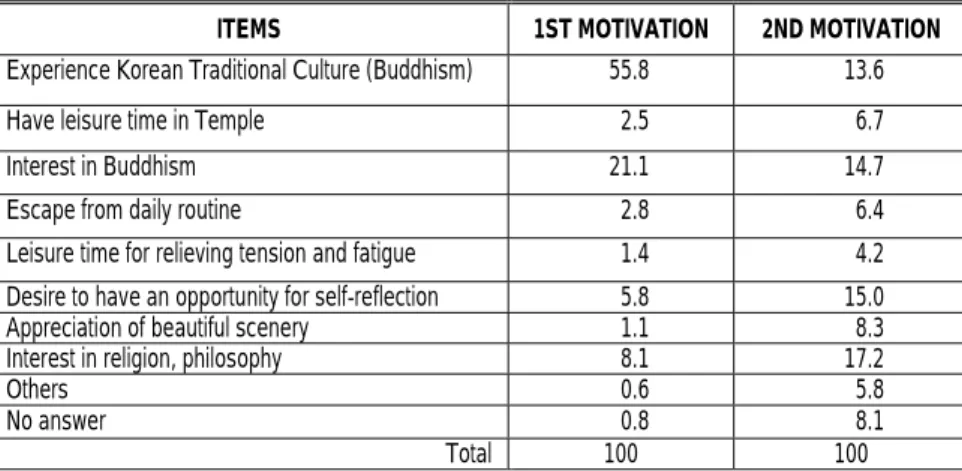
State of Michoacán, Mexico
There are plenty of thermal spring heads in the eastern and mid-northern part of the state and it has a very pleasant temperate climate. The P'urhépecha region covers 17 municipalities and more than 100 communities, where 92% of the Indian population of the state lives. The state's main productive activities are: services, tourism, agriculture, industry and cattle breeding, forestry, crafts and trade.
An example of the significance of these cultural-tourism events is Morelia's International Music Festival. Morelia's Festival has been the meeting point for the world's greatest composers and the best instrumentalists from countries such as Denmark, Argentina, Cuba, Australia, Japan, Brazil and Mexico. As a result, there are communities where the majority of the population consists of women and the elderly.
The state government has been working with civil society in Michoacán to save and revive the cultural heritage in buildings. Also on the P'urhépecha Plateau, "Adopt a Work of Art" restored ceilings, altarpieces and pictures in 16th and 17th century churches and chapels. To bring tourist value to the rich and varied gastronomy of the state of Michoacán, the state government has organized four gatherings of Michoacán chefs.
The Industrial Monuments Route of the Silesian Voivodeship,
This is how the idea of the "Industrial Monuments Route of the Silesian Voivodeship" was born. The "Industrial Monuments Route of the Silesian Voivodeship" creates new value and represents the basis for regional identity and tourism development. The official opening of the "Route of Industrial Monuments of the Silesian Voivodeship" took place in October 2006.
The target locations are the 31 places on the "Industrial Monument Route of the Silesian Voivodeship". In February 2008, the first offer of commercial travel on the "Industrial Monument Route of the Silesian Voivodeship" was published. Industrial Monuments Route of the Silesian Voivodeship” composed of 29 sites and provided financial resources for the project.
May-August 2006: A document "Industrial Monuments Route of Silesian Voivodeship Information System" was prepared. The "Road of Industrial Monuments of the Silesian Voivodeship" attracts a lot of attention, especially among Polish tourists. The organization, which should present the "Road of Industrial Monuments of the Silesian Voivodeship" as an attractive product.

